Security & Compliance
• 9 min read
Top 8 Duo Security Alternatives For IT Teams To Try In 2024
23rd November, 2023
SHARE ON:
When it comes to managing employee access efficiently, admins often seek the assistance of identity access management (IAM) solutions to simplify the process. One such solution, Duo Security, offers robust features to enhance security and access control.
However, exploring alternatives in the IAM landscape is essential to finding the best fit for your organization's needs and challenges. Let's delve into some noteworthy Duo Security alternatives & competitors that can provide valuable options for secure access management.
Duo Security is a leader in identity and access management (IAM) solutions, offering a robust suite of tools to enhance security and streamline access control for organizations.
Duo Security's key features include multi-factor authentication (MFA) and two-factor authentication (2FA) applications and access tools, which have become essential assets for organizations looking to enhance their security protocols. These accessible and intuitive solutions elevate your organization's security readiness and streamline the intricate tasks of securing access, reinforcing authentication methods, and maintaining diligent oversight of devices.
Duo's offering includes single sign-on functionality, simplifying user logins by allowing access to multiple systems and applications, seamless integration with various systems, cloud-based operation for minimal on-premises setup, compliance support, and user self-service options.
With a strong focus on enhancing security while maintaining user convenience, Duo Security empowers organizations to fortify their access security and meet regulatory requirements.
While Duo excels in many unique features, exploring Duo Security alternatives and competitors allows you to compare and choose the IAM solution that best fits its security, usability, and budgetary considerations. Before that, it's crucial to recognize that even though Duo Security provides robust security and access management solutions, no system is entirely without limitations.
Awareness of these drawbacks is essential for organizations making informed decisions when considering Duo Security as their IAM solution. Here are several key limitations to consider:
Drawbacks of Duo Security
Here are some notable drawbacks associated with Duo Security:
Push Notification Issues for iOS Users: Duo Security may present challenges for iOS users, particularly with regard to receiving push notifications. This can potentially disrupt the seamless verification process, causing delays or inconvenience during login attempts.
Migration to New Devices: Some users may find migrating their Duo Security authentication setup to a new device challenging. This process can be cumbersome and may require additional support or guidance, leading to potential usability issues.
Limited Free Version: Duo Security is not entirely free and has limitations, particularly in the mobile version. Users may encounter constraints on the number of user accounts they can manage without opting for a paid subscription, which could impact organizations with a significant user base.
Customer ratings
G2: 4.5/5
This article will discuss the best Duo Security alternatives that can help your IT admins choose effective IAM solutions for your organization. Before we delve into the comprehensive list of competitors to Duo’s IAM, it's worth highlighting a top contender - Zluri.
Zluri - The Best Duo Security Alternative

Zluri offers a robust SaaS management platform designed to address the complex challenges associated with identity and access management (IAM). It serves as a comprehensive solution for managing your organization's SaaS applications, their associated user access policies and ensures strict enforcement of secure authentication and authorization controls.
Additionally, Zluri provides real-time monitoring of user activity to help maintain compliance with security standards and regulations.
Imagine a new team member joining your organization. Zluri seamlessly integrates their information with their digital identity, streamlining the user provisioning process. This integration enables your IT admins to swiftly confirm their identity and assign precisely tailored access levels for various applications and data resources.
This efficiency not only accelerates the onboarding process but also minimizes the security risks or the risk of errors in user access provisioning.

Zluri's centralized platform gives you a unified view of your organization's access control landscape. You can exercise precise control over which applications your team members can access from a single, intuitive dashboard.
Furthermore, you can closely monitor login and logout activities and manage permission levels effortlessly. This comprehensive visibility improves security and helps identify and respond promptly to suspicious activities, such as unauthorized access attempts.
Zluri seamlessly integrates with your HR system, ensuring that employee information remains up-to-date and accurate. This integration plays a pivotal role in verifying employee identities during various stages, including onboarding, mid-lifecycle changes, and user offboarding, thereby maintaining a seamless and secure IAM process.
Zluri conducts regular audits and generates detailed reports that offer deep insights into employee and application activity. These reports cover a wide range of activities, including login and logout events, group creation, department management, and changes to user profiles.
Such comprehensive reporting is instrumental in maintaining compliance regulations, making audits more efficient, and ensuring the security of sensitive data.
Customer ratings
G2: 4.8/5
Capterra: 4.9/5
Top 8 Duo Security Alternatives for Identity & Access Management
Here is a list of the top 8 Duo Security competitors for identity and access management. Each alternative offers unique features and capabilities, allowing you to choose the IAM solution that best aligns with your specific security and access management needs.
1. LastPass
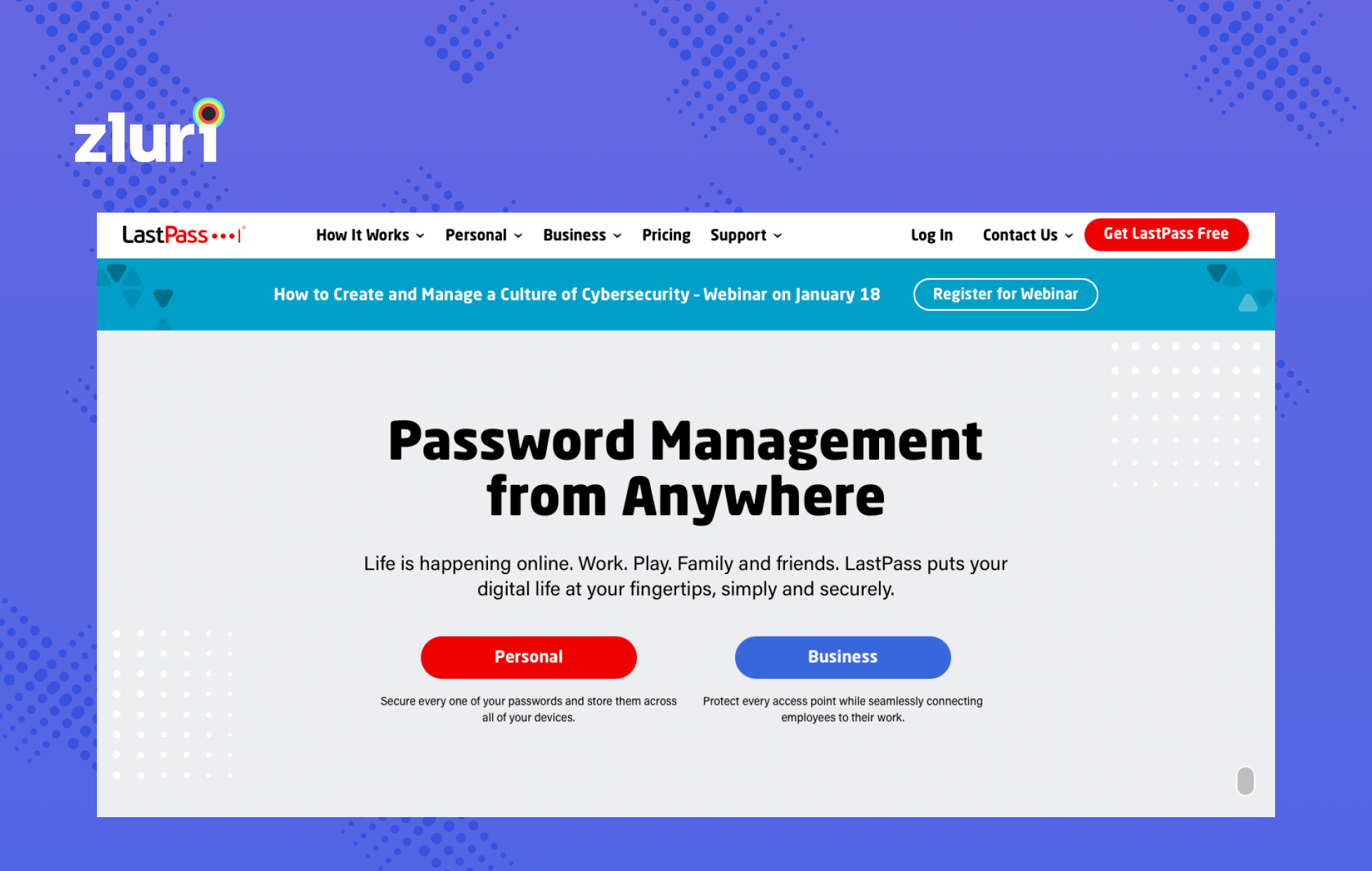
LastPass is a premier identity management solution, empowering employees to effortlessly generate, store, and securely share their login credentials with IT administrators. Its robust capabilities extend beyond mere password protection and credential management, as it affords admins unparalleled transparency and authority through comprehensive security guidelines and reporting mechanisms.
Distinguished by its vast integration network, LastPass seamlessly links with over 1200 pre-integrated single sign-on applications. This pre-built integration expedites the setup of SSO access to a multitude of essential applications, significantly streamlining the user experience.
At the heart of LastPass lies its impenetrable zero-knowledge security architecture, safeguarding user information with the utmost confidentiality and fortification. Furthermore, it boasts an ideal solution for advanced authentication options, including single sign-on and multi-factor authentication, fortifying access security to unparalleled levels.
Pros
LastPass offers biometric multi-factor authentication (MFA), bolstering login security with an extra layer of security.
LastPass automatically fills in the login information for all saved websites and enables users to save login information for any new websites they visit.
Cons
LastPass's auto-fill feature may not always work smoothly alongside other website form-fill features, potentially causing compatibility issues.
Implementing LastPass within an organization may prove to be a hurdle when onboarding employees due to its technical requirements and skill demands.
Customer ratings
G2: 4.5/5
Capterra: 4.7/5
2. Ping Identity
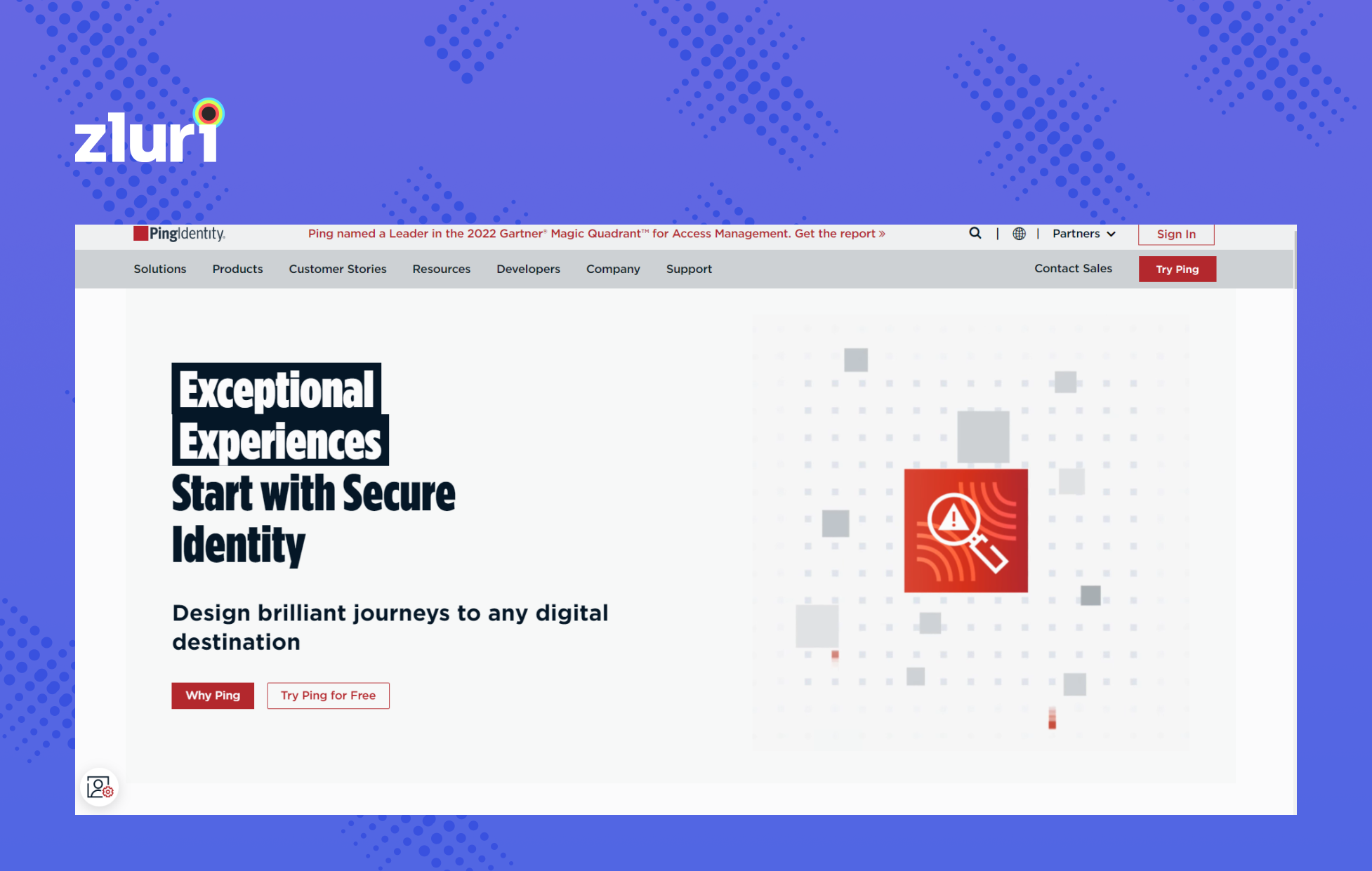
Ping Identity offers a robust identity and access management platform to enhance security and streamline access to networks, APIs, cloud-based applications and on-premises software for businesses. Leveraging cutting-edge AI technology, the platform proactively identifies and mitigates suspicious activities while ensuring compliance with industry regulations.
This versatile tool empowers organizations to establish comprehensive access policies for safeguarding sensitive resources. It facilitates seamless integration, synchronization, and data archiving from diverse sources, consolidating this information into a centralized repository for efficient management.
Pros
Ping Identity provides a user-friendly self-service portal with a streamlined user interface, simplifying registration and authentication requests, streamlining onboarding, and boosting user productivity.
Users can easily assign and update information related to resource ownership, enhancing the control and transparency of resource allocation within the organization.
Cons
One drawback is the limited flexibility for adding custom attributes directly within the tool, posing challenges for organizations with specific customization needs.
While Ping Identity offers solid deployment options, it lags slightly behind some competitors in terms of advanced deployment choices. Businesses seeking highly specialized deployment configurations may find more advanced alternatives elsewhere.
Customer ratings
G2: 4.4/5
3. OneLogin
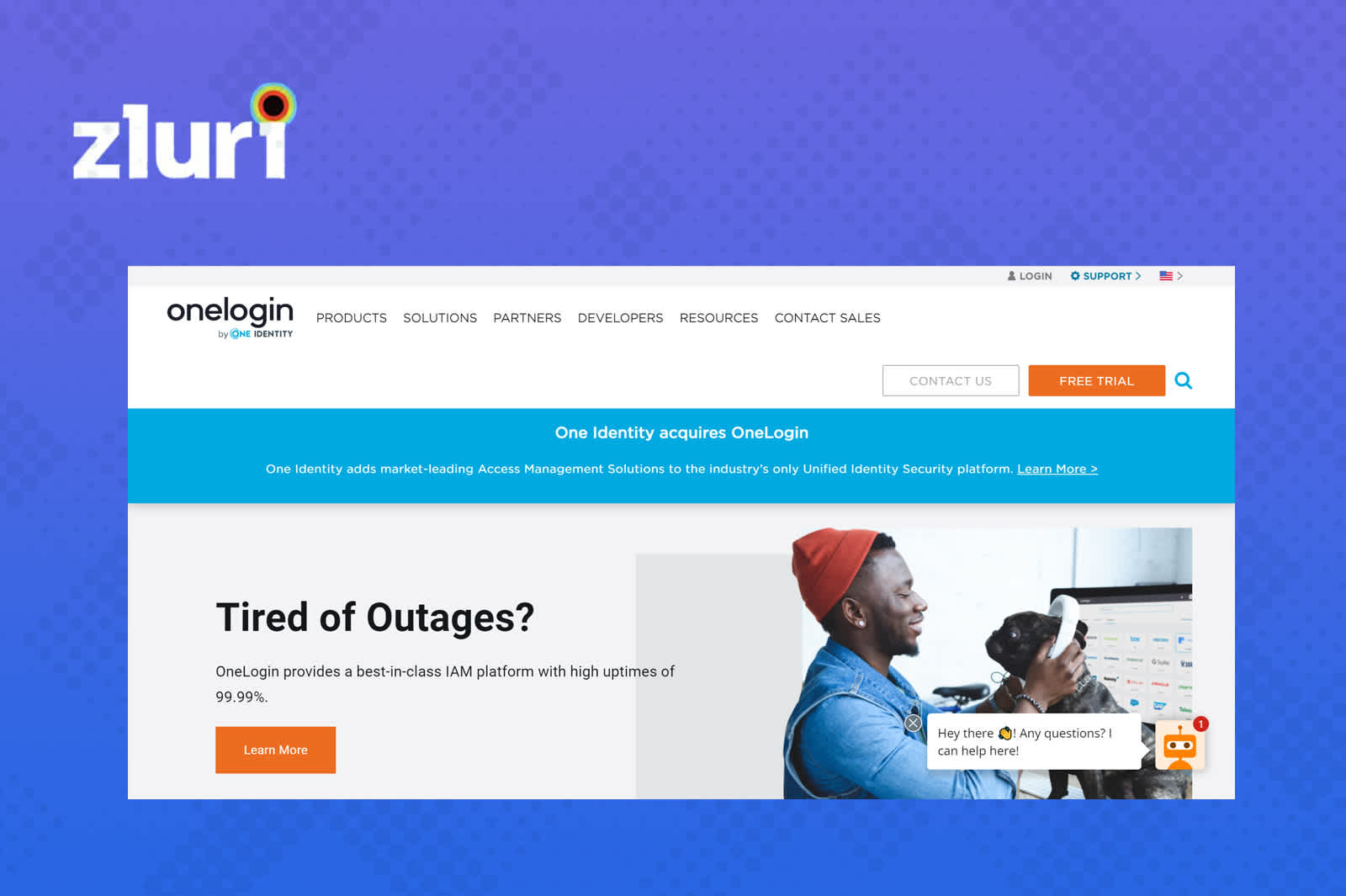
OneLogin, a strong Duo competitor in the identity and access management space, offers enterprises a robust solution for managing user access to applications, both internal and external. This not only ensures compliance with IT identity policies, but also effectively handles the timely revocation of access to applications for departing or reassigned employees by seamlessly managing active directory deletions.
OneLogin stands out by simplifying identity management through its secure, one-click access to a wide variety of business cloud apps and on-premises applications, catering to employees, customers, and associates, making it a compelling competitor in the IAM landscape. Moreover, it excels at automating essential processes such as user provisioning and deprovisioning, significantly reducing reliance on time-consuming manual methods.
Pros
OneLogin offers a centralized repository for securely storing user credentials, which enhances security and simplifies access management.
It allows your admins to implement tailored authorization policies, providing fine-grained control over user access to resources, and adding a layer of security.
Cons
One limitation is the absence of comprehensive consent management from the user's perspective within individual applications. This may impact user control and consent over their data and activities.
OneLogin does not support integration with several popular platforms like JIRA, GIT, and numerous others. This can be a significant drawback for organizations that rely on these platforms for their operations and workflows.
Customer ratings
G2: 4.3/5
Capterra: 4.6/5
4. AuthO
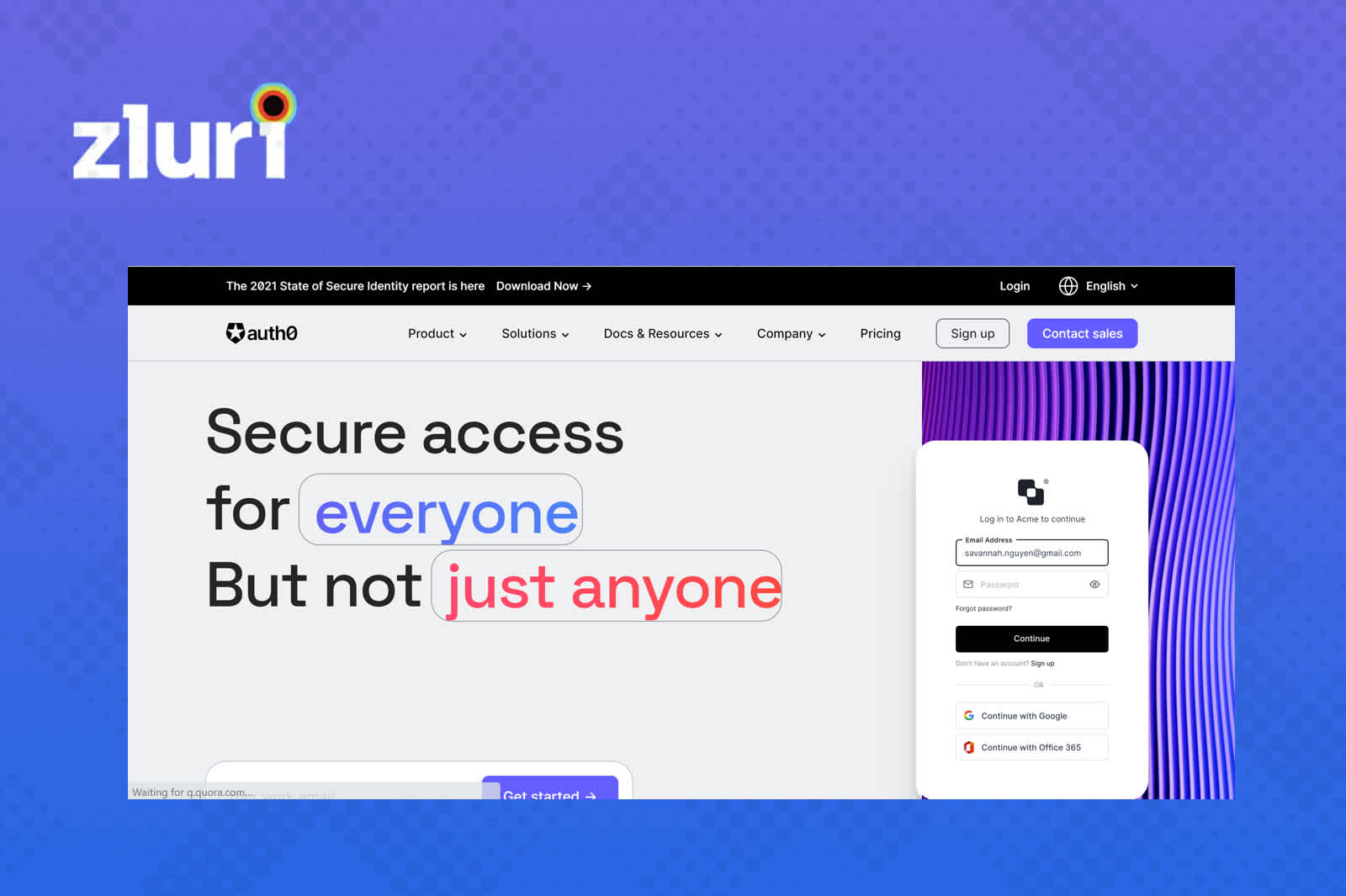
Auth0 is another formidable Duo alternative, offering a robust identity and access management solution dedicated to ensuring organizations' secure access to their applications while placing utmost importance on user data privacy and security. This unwavering commitment enables users to focus on tasks, ultimately enhancing overall productivity.
Auth0 streamlines the authentication process through many features, including unified login, single sign-on, multi-factor authentication, two-factor authentication, and more. These capabilities simplify access management and fortify the security of user interactions with applications, making Auth0 a compelling choice in the realm of identity and access management.
Pros
Auth0 makes searching, updating, and managing various users' access information easy, simplifying administrative tasks and enhancing efficiency.
Auth0 offers data source connectors that facilitate connections with both on-premises and IAM cloud providers, providing flexibility in integrating and managing user data.
Cons
Users may encounter challenges when attempting to change their email addresses if needed, potentially leading to user experience issues and support requests.
Auth0 primarily focuses on cloud-based identity solutions, which might not be the best fit for organizations heavily reliant on on-premises applications and systems.
Customer ratings
G2: 4.3/5
5. CyberArk Identity
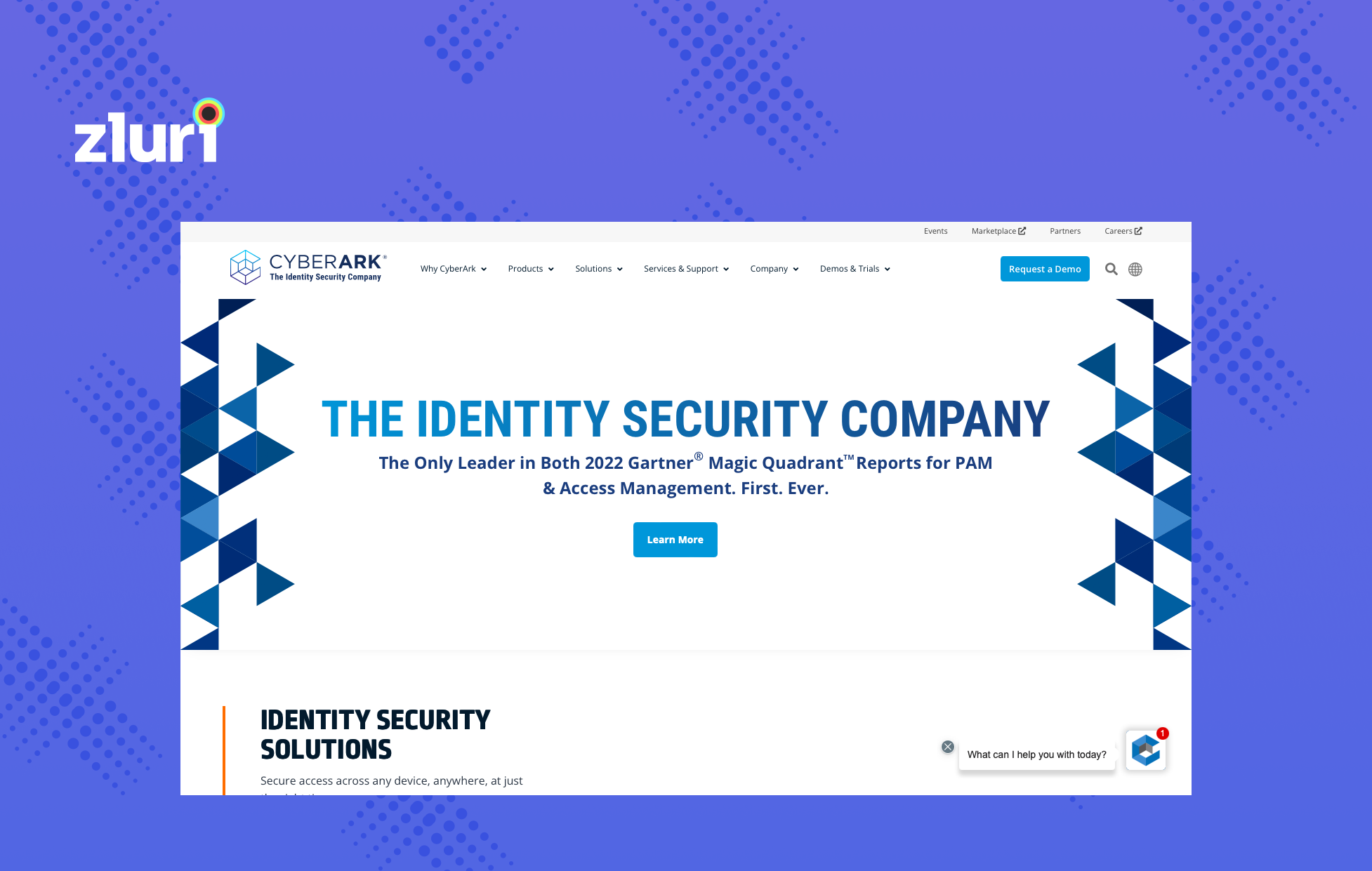
CyberArk Workforce Identity platform is an advanced solution designed to streamline and secure user access across an organization's entire application landscape, spanning cloud-based, mobile, and legacy platforms. It ensures a smooth and highly secure user sign-in and sign-out experience, particularly during user onboarding and offboarding processes. It takes into account various risk factors to bolster security.
Enhancing security even further, CyberArk adaptive multi-factor authentication plays a crucial role in safeguarding your systems. By requiring users to provide a variety of authentication methods before accessing applications, it serves as a powerful defense against cyberattacks that target compromised credentials.
What sets CyberArk Workforce Identity solution apart is its cutting-edge AI capabilities, which enable personalized authentication experiences for individual users. This innovative feature strengthens security and enhances user convenience and experience by tailoring authentication methods to each user's unique needs and preferences.
Pros
CyberArk Workforce Identity offers various capabilities, including server access management and role-based authentication, making it adaptable to diverse organizational requirements.
Users benefit from SSO-enabled features, simplifying credential management and enhancing user convenience.
Cons
CyberArk Identity's smartphone permissions, while useful, can raise privacy concerns. The absence of granular permission controls can be a limitation, potentially exposing sensitive data.
The lack of support for SAML response encryption is a drawback. Enhanced encryption measures are crucial for securing sensitive data during authentication processes and data exchanges.
Customer ratings
G2: 4.4/5
6. JumpCloud
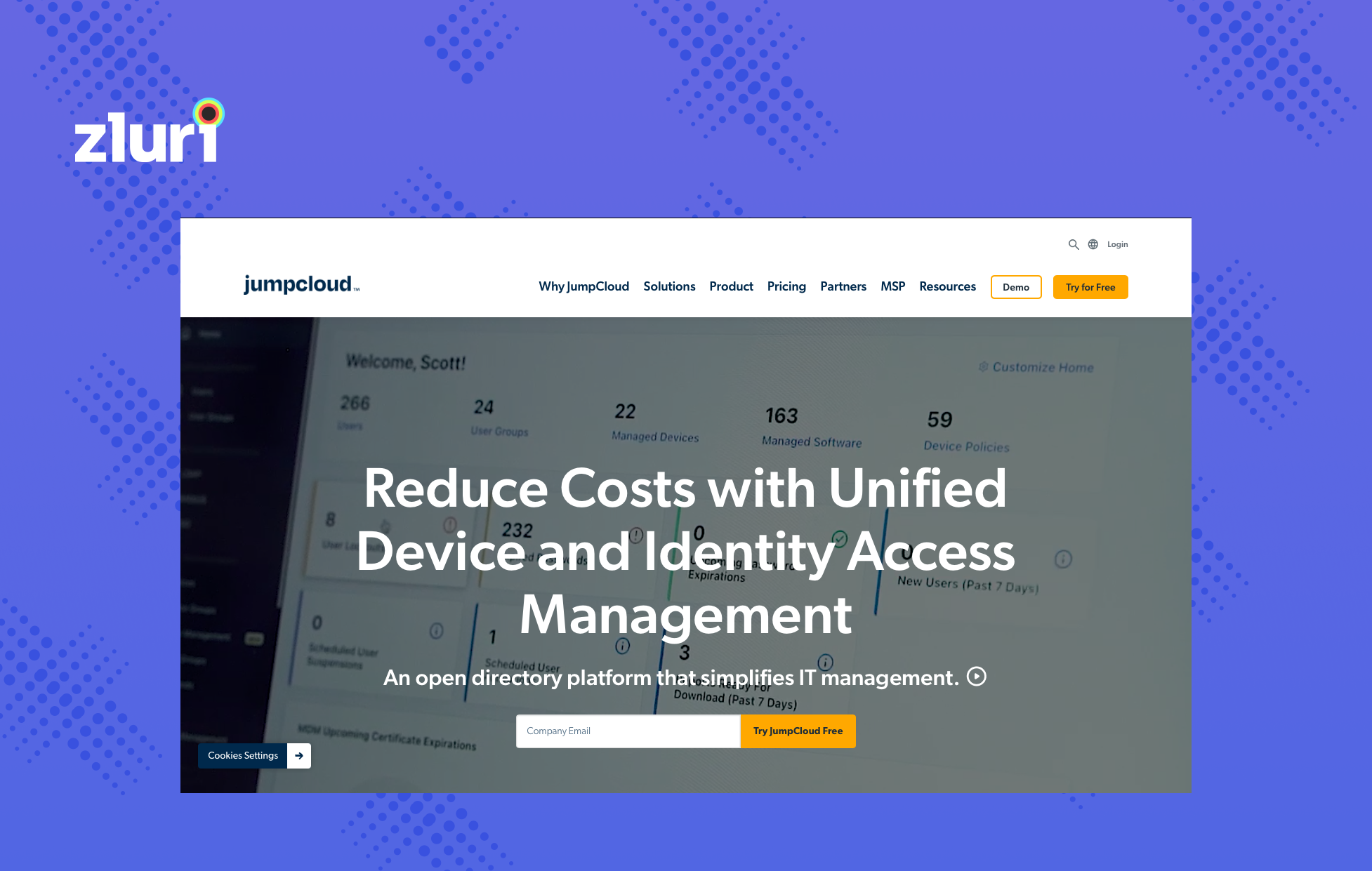
JumpCloud is a versatile Duo alternative, serving as a robust open directory solution that centralizes the management and control of access to a wide range of features. This versatile platform empowers the IT department, security operations, and DevOps teams by facilitating the administration and security of user identities and mobile devices while enabling the implementation of zero-trust policies.
Through JumpCloud, organizations gain the capability to effectively manage authorization restrictions, enforce secure password policies, and seamlessly grant user access across all system endpoints, bolstering overall security and access control.
Pros
JumpCloud offers extensive customization options, allowing organizations to tailor the tool to their specific needs and preferences. This flexibility enhances its adaptability to unique use cases.
The platform provides efficient group-based access control functionality, simplifying the management of user access permissions and making it easier to implement security policies.
Cons
One notable limitation of JumpCloud is the absence of mobile device management (MDM) capabilities for smartphones and tablets. MDM is crucial for maintaining control and security over mobile devices within an organization.
JumpCloud has room for improvement when it comes to reporting. The availability of more comprehensive reporting features within the admin portal would be beneficial for tracking and analyzing user access and security data.
Customer ratings
G2: 4.6/5
Capterra: 4.7/5
7. RSA SecurID
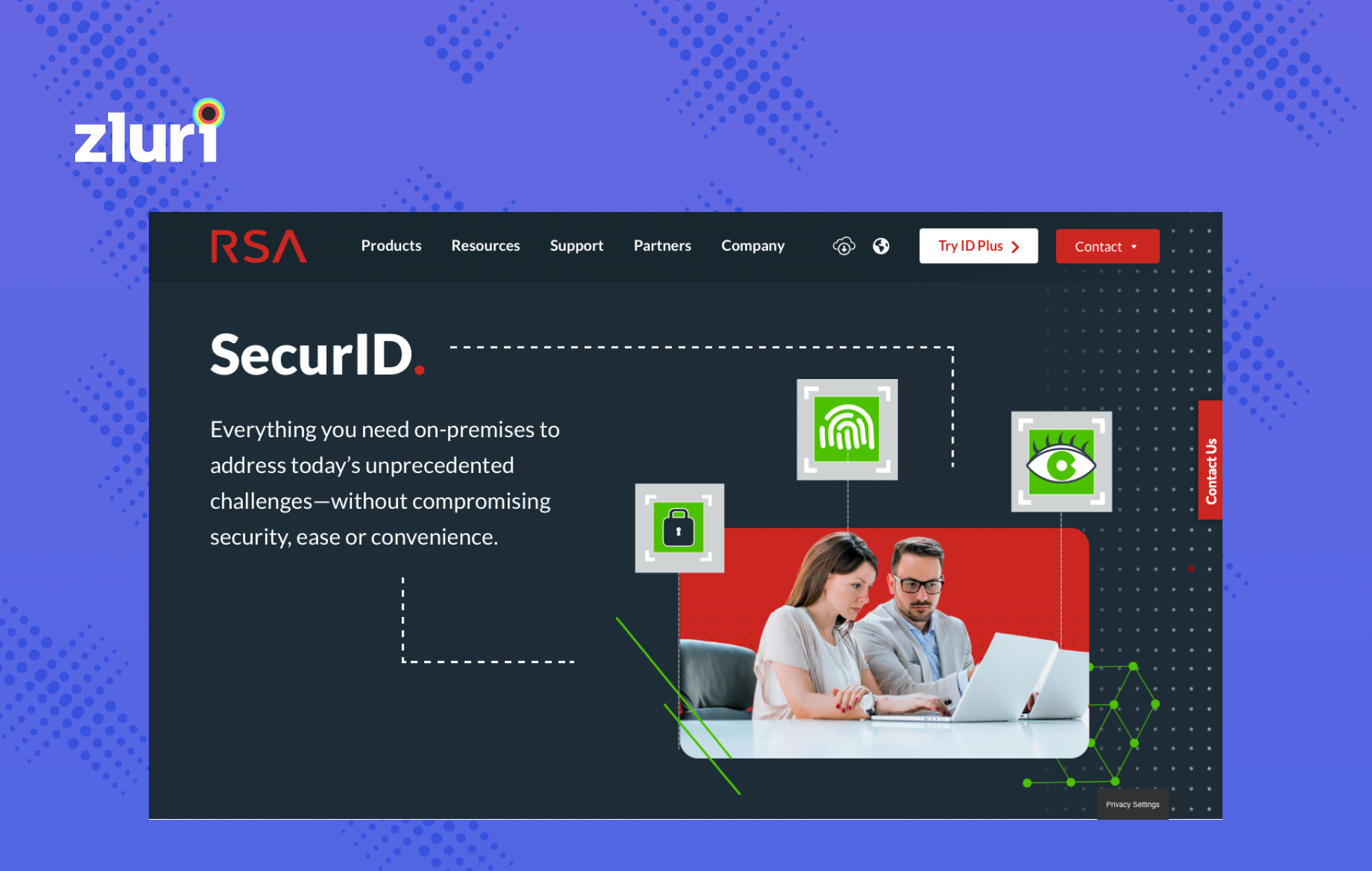
RSA SecurID Suite offers a comprehensive identity and access management solution designed to empower businesses with the flexibility to tailor access privileges for a diverse user base, including employees, associates, customers, and freelancers. This solution seamlessly spans both cloud and on-premise infrastructures, granting secure access to critical applications and sensitive data.
Leveraging state-of-the-art machine learning capabilities, IT teams can deploy multi-factor authentication with various authentication methods, such as push notifications, biometrics, one-time passwords (OTPs), and FIDO tokens.
Moreover, this Duo competitor's centralized platform streamlines administrative tasks, enabling the automation of essential processes like tracking, certification, notification, authorization, and compliance management.
Admins can efficiently verify user identities, approve authentication requests, simplify troubleshooting procedures, and expedite the creation of replacement credentials. This multifaceted approach ensures a robust and user-friendly security environment for your organization.
Pros
RSA SecurID Suite offers an assurance-level feature that allows organizations to implement risk-based authentication procedures. This enhances security by adopting a range of authentication methods based on the perceived risk level of each login attempt.
The system automatically generates a new token when the old one expires. This feature eliminates the inconvenience of manually re-entering a password to obtain a new token, enhancing user convenience and security.
Cons
Some users may encounter difficulties when resetting their passwords. Providing adequate support and resources for users who require assistance with this process is essential to ensure a smooth user experience.
While the tool offers robust user provisioning capabilities, it may benefit from improvements in user-friendliness. Simplifying the user provisioning process can reduce the learning curve for admins and improve overall efficiency in managing user access.
Customer ratings
G2: 4.8/5
Capterra: 4.5/5
8. Entrust Identity as a Service
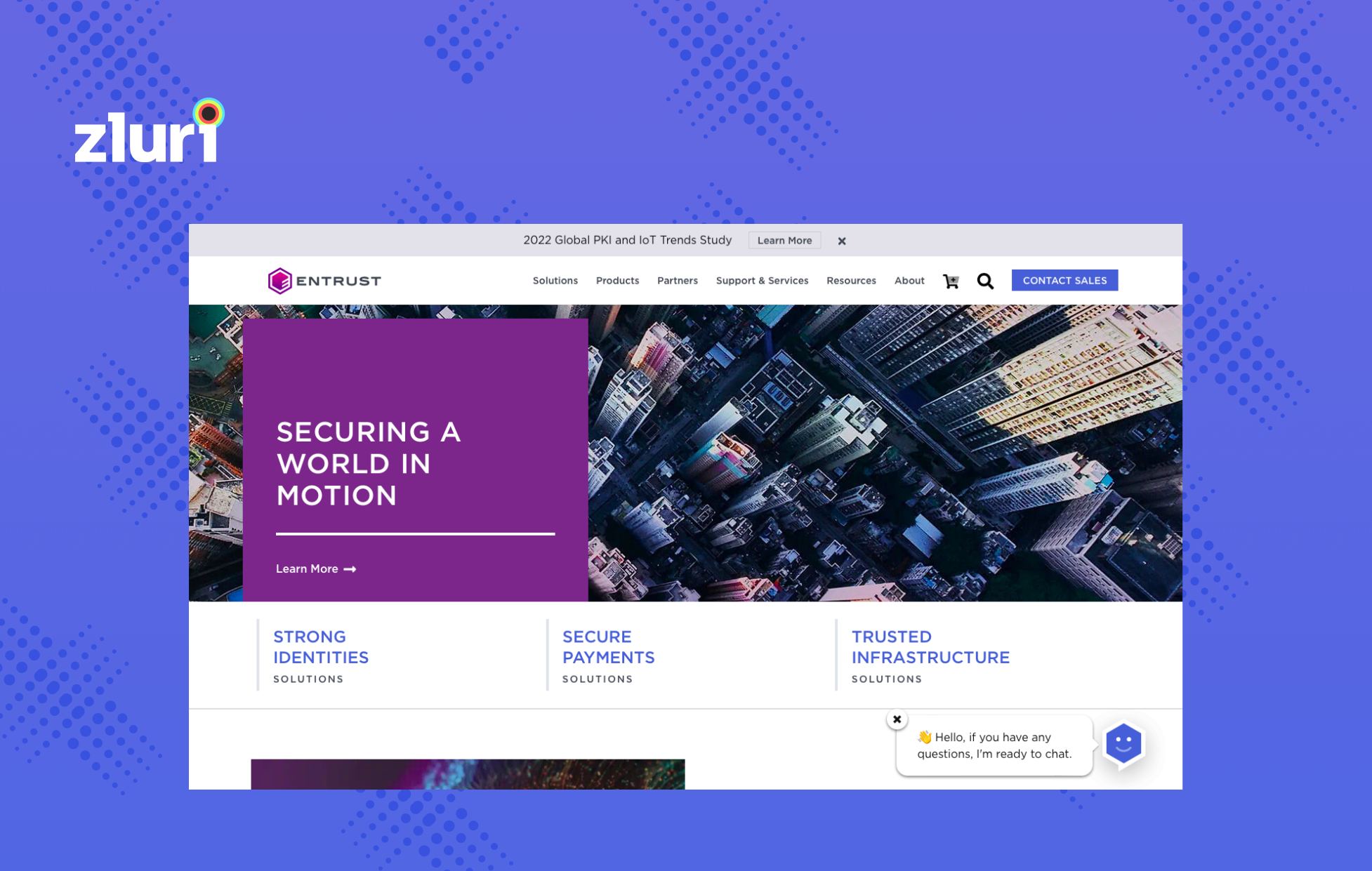
Entrust Identity is a formidable Duo Security alternative, offering an advanced IAM solution to safeguard employees and customers within organizational settings. With its robust cybersecurity capabilities, Entrust Identity empowers businesses to fortify their digital defenses.
Central to its arsenal of security features is the multi-factor authentication functionality, which empowers your admins to enhance the safeguarding of sensitive resources and critical applications. This is achieved by strategically allocating user login credentials and access privileges based on their assigned roles, thereby reducing the risk of unauthorized access.
What sets Entrust Identity apart is its advanced features, like adaptability in implementing security measures tailored to the technological capabilities of each device. From adaptive authentication to seamless push notifications and even the utilization of biometrics, Entrust Identity allows companies to tailor their security strategies to suit the diverse needs of their user base.
Pros
Entrust Identity provides authorization capabilities for a wide range of applications, ensuring businesses can secure a broad range of digital assets, from critical internal systems to third-party applications.
Cons
One notable drawback of Entrust Identity is its relatively high cost when compared to alternative solutions in the market. The premium price tag may pose budgetary challenges for some organizations, particularly smaller ones with limited resources.
For certain users, transitioning to a registered device may present difficulties, potentially leading to user frustration and support-related issues.
Customer ratings
G2: 4.4/5
About the author
Tathagata is a Technical Content Writer with 4+ of experience in the SaaS industry. He has a keen eye for research and understanding macro trends in the SaaS & AI-based technology space. He has worked across several marketing & strategy roles in various domains like banking, e-commerce, and education sectors. In his leisure time, Tathagata is a full-time PC gamer.
Related Blogs
See More
Subscribe to our Newsletter
Get updates in your inbox
